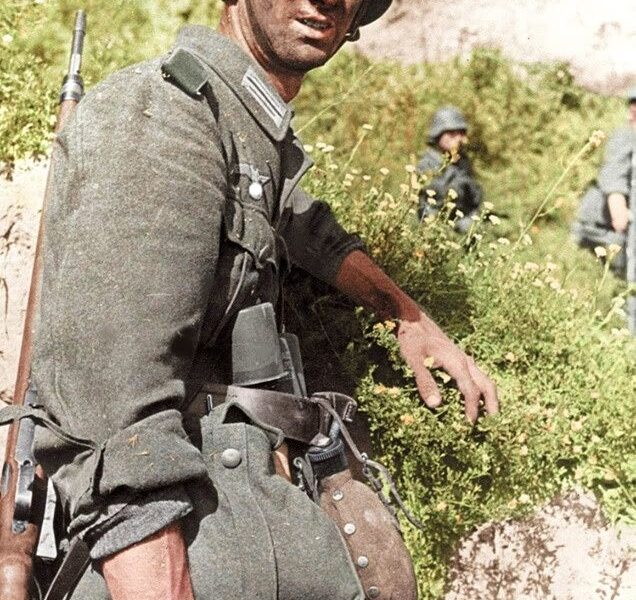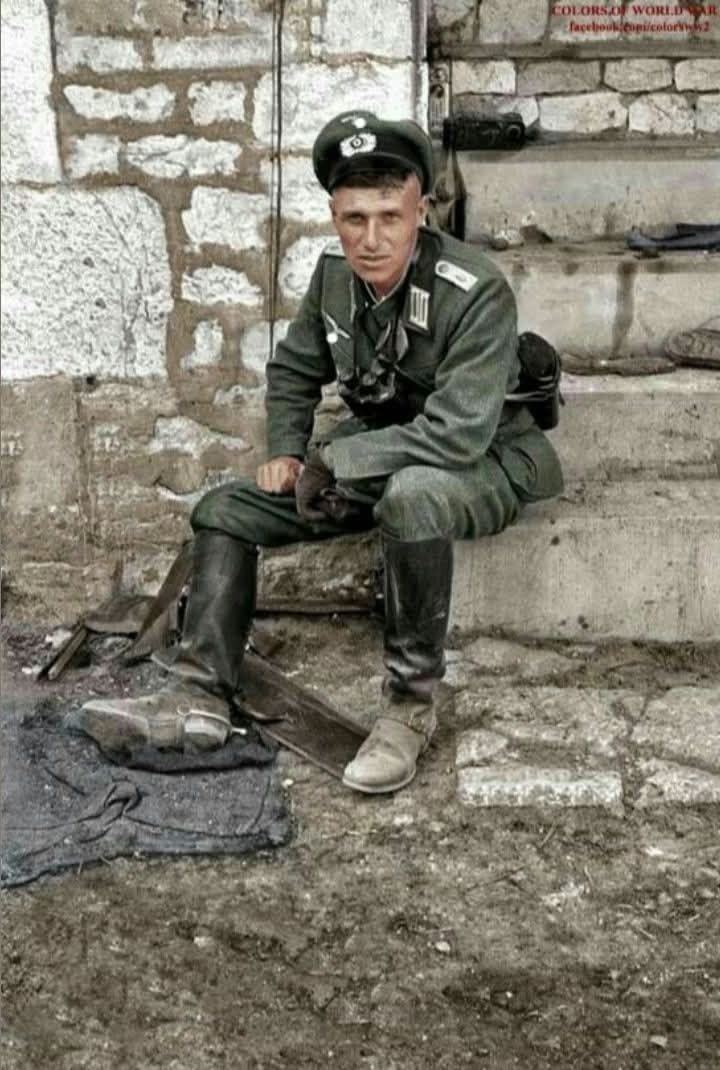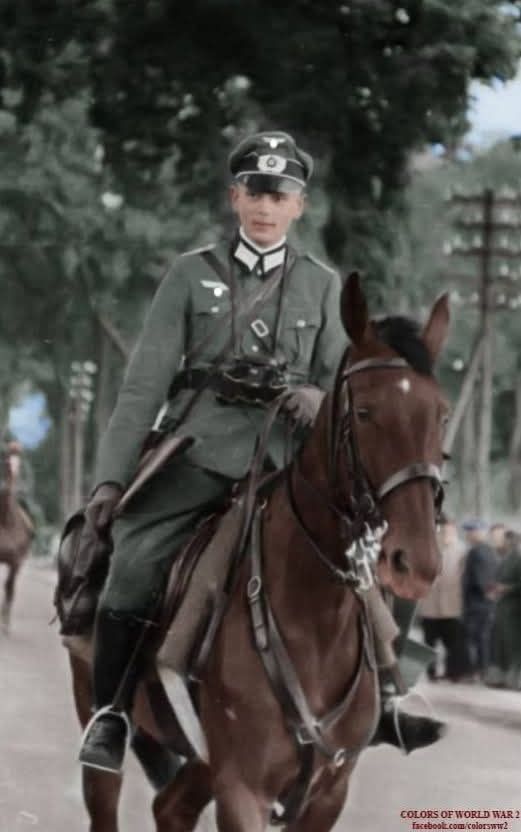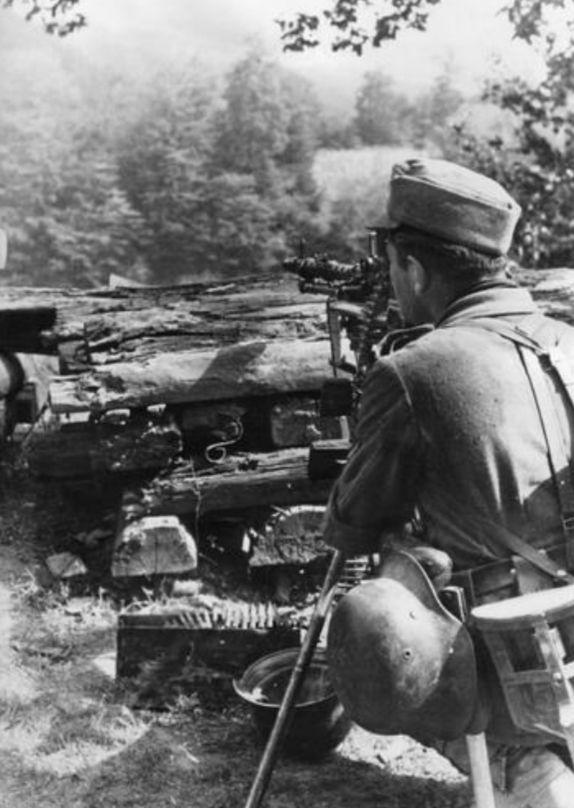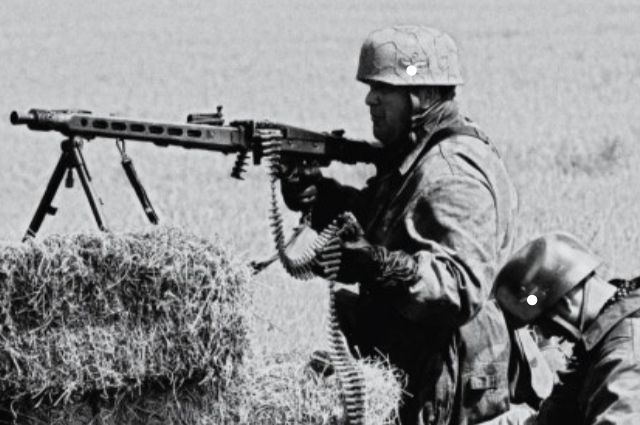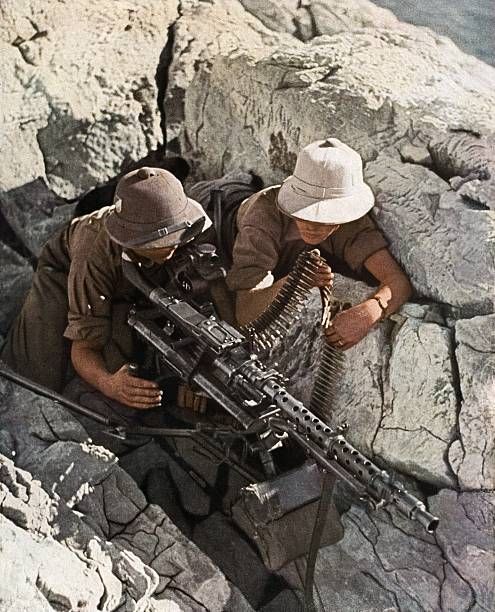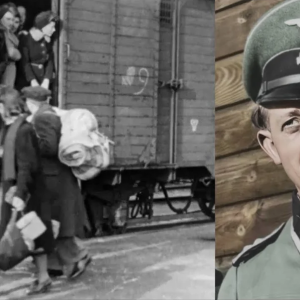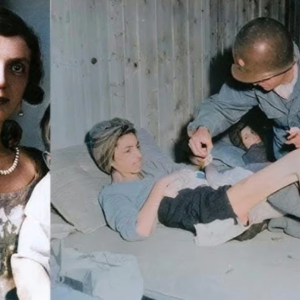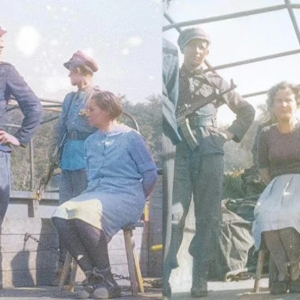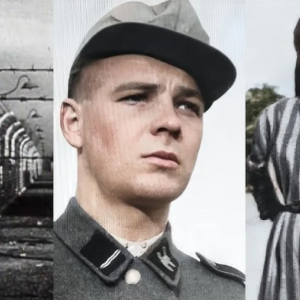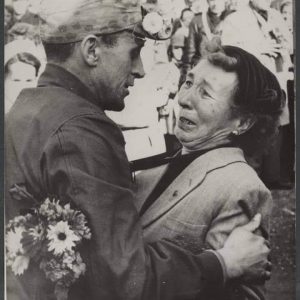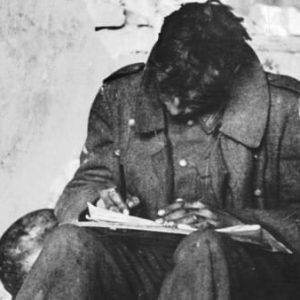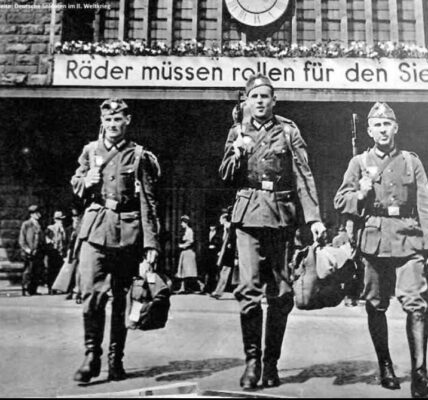
The photo shows a German soldier, marked by the fighting on the Eastern Front (1941).
It can be seen that he is armed with the 98k carbine and carries M-24 wooden grenades on his belt.

In the photo, German children examine the equipment of a German paratrooper.

In the photo, German soldiers next to an MG-34 machine gun during military training (1940).

German soldiers march across a field during the first months of Operation Barbarossa (1941).
You can see that they are wearing M-36 and M-40 uniforms.

The photo shows mountain troops next to a 7.5 cm Pak 40 anti-tank gun in the mountains of Yugoslavia.

The photo shows German soldiers next to an Sturmgeschütz III (StuG III) advancing towards the Battle of Stalingrad (1942).
German soldiers next to an MG 08/15 machine gun (1940).
In the photo: German soldiers next to an MG-34 machine gun during a training exercise.
In the photo: A German soldier reports the number of received wooden hand grenades of the M-24 model (1943).
In the photo: Kriegsmarine sailors next to a 20 mm MG-FF cannon at an observation post.
In the photo: German soldiers march to the Eastern Front (1942).
It can be seen that they are armed with the Karabiner 98k.
In the photo: A Panzer III on a test site (May 1937).
In the photo: Luftwaffe soldiers next to an 88 mm Flak anti-aircraft gun.
The enormous 88 mm projectiles can be seen.
In the photo: German soldiers next to a 50 mm PaK 38 anti-tank gun.
In the photo: German soldiers, exhausted from the intense fighting on the Eastern Front, wait for new orders to launch Operation Spring Awakening (1945).
It can be seen that the soldier in the foreground is armed with an MG-42 machine gun.
In the photo: A German soldier next to a 5 cm Granatwerfer 36 on the outskirts of Leningrad (1943).
In the photo: A German soldier digs out a Zundapp KS-600 motorcycle with sidecar stuck in the mud (1943).
In the photo: German soldier Fritz Reidel returns to his wife and three children on May 21, 1945.
According to German statistics, most prisoners of war were released faster than Allied soldiers: Of the 2 million prisoners held by the Soviets, 900,000 were released in 1946, 300,000 in 1947 and 1948, and another 400,000 in 1949. Thus, 45% returned within one year, 60% within two years, and 75% within three years. Only 5% remained in captivity until the 1950s.
In the photo: A German soldier in the pose “presenting the rifle” (1939).
It can be seen that he is armed with a Karabiner 98k.
In the photo: German soldiers next to a 15 cm Nebelwerfer 41 multiple rocket launcher.
This powerful weapon was primarily used to support infantry and was known for its characteristic howling sound when fired, which often caused panic among opponents.
In the photo: German soldiers with an MG-34 machine gun in firing position.
This reliable weapon was used both by infantry and as on-board weapon in vehicles and was considered one of the most advanced machine guns of its time.
In the photo: German soldiers cross a bridge in Polish territory that was bombed by Polish troops to stop the German advance (September 8, 1939).
Such scenes were part of the early phase of World War II, when the Wehrmacht implemented its Blitzkrieg strategy, which relied on speed and surprise, and occupied Poland within a few weeks.
Fallen German soldiers are buried under U.S. supervision by German prisoners of war in Manche, Normandy – July 1944. LIFE Magazine Archives – Photographer: Ralph Morse – WWP-PD
The photo shows an exhausted German officer after heavy fighting in Stalingrad (1942).
A German soldier carries an MG-42 machine gun on his shoulder.
The photo shows a German soldier on horseback (1940).
The photo shows a Waffen-SS soldier with an ammunition belt for an MG-42 on the Eastern Front (1943).
The photo shows a highly decorated German soldier.
Awards:
-
Iron Cross 1st Class
-
Iron Cross 2nd Class
-
Wound Badge
-
Infantry Assault Badge
-
Medal Winter Battle in the East 1941/42
-
Melee Clasp
-
Sudetenland Medal
-
4 Tank Destruction Badges
